[Editor’s Note: Today’s post is excerpted from the newly published Army Future Command’s AFC Pamphlet 525-2, Future Operational Environment: Forging the Future in an Uncertain World 2035-2050. This pamphlet 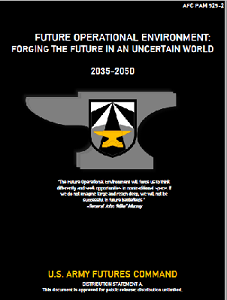 complements the TRADOC G-2’s Intelligence Preparation of the Battlefield (IPB) work done early this Summer that explored the four possible near-term (i.e., 2020 to 2028) worlds facing us as we emerge from the COVID-19 Global Pandemic (see last month’s Four Models of the Post-COVID World post).
complements the TRADOC G-2’s Intelligence Preparation of the Battlefield (IPB) work done early this Summer that explored the four possible near-term (i.e., 2020 to 2028) worlds facing us as we emerge from the COVID-19 Global Pandemic (see last month’s Four Models of the Post-COVID World post).
In exploring the Future Operational Environment (OE) in the mid-to-far term, AFC has introduced two key factors critical to deliberations about Army Modernization — the concentration of global power, and global technological innovation — and presented four alternative futures to explore how different values of these two factors might interact in the future.
Taken together, these two posts provide the Army with a single consistent Operational Environment narrative for the Army, from now to 2050. Read on!]
“We do not want to get to 2035 to find we have fallen behind. We want to aim ahead of the competition and not behind it.” – General John “Mike” Murray, CG, AFC
Future Operational Environment: Forging the Future in an Uncertain World 2035-2050 proposes four distinct alternative futures, presented below: (1) a bipolar system with revolutionary technological innovation, (2) a multipolar system with revolutionary technological innovation, (3) a bipolar system with evolutionary technological innovation, and (4) a multipolar system with evolutionary technological innovation. More attention is devoted to the first two alternative futures, as they are deemed most consequential to the U.S. Army.
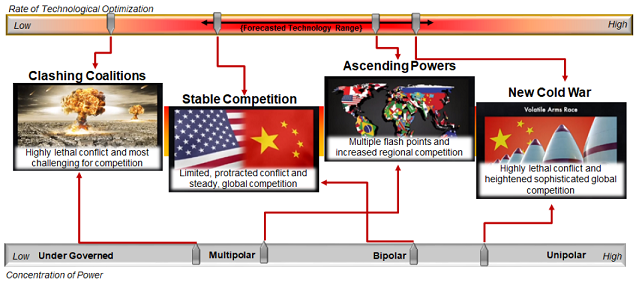
Alternative Future #1: The New Cold War
 In this alternative future—a bipolar system with revolutionary technological innovation—the U.S. and China compete to achieve global primacy. Aggressive and active competition, rather than kinetic warfare, dominates the U.S.-China relationship. Advanced weapons and economic interdependencies are deterrents to large-scale conventional warfare, but China pursues its strategic goals partly through a series of proxy conflicts around the world and by demanding acquiescence to its extractive economic policies. Lower-tier powers and non-state actors still remain capable of presenting substantial threats – as well as opportunities for security cooperation – thereby influencing global geopolitics, albeit in more limited ways.
In this alternative future—a bipolar system with revolutionary technological innovation—the U.S. and China compete to achieve global primacy. Aggressive and active competition, rather than kinetic warfare, dominates the U.S.-China relationship. Advanced weapons and economic interdependencies are deterrents to large-scale conventional warfare, but China pursues its strategic goals partly through a series of proxy conflicts around the world and by demanding acquiescence to its extractive economic policies. Lower-tier powers and non-state actors still remain capable of presenting substantial threats – as well as opportunities for security cooperation – thereby influencing global geopolitics, albeit in more limited ways.
There exists a discernable gap in global economic, diplomatic, military, and cultural influence between the superpowers and all others. Superpower competition is the primary driver of global trade and diplomacy. It is shaped by U.S. promotion of a liberal-democratic order that values individual freedom and choice, versus China’s promotion of authoritarian socialism that endorses safety and predictability via centralized control and intensive social monitoring. China continues to proffer their system as an alternative to that of the West, primarily to guarantee its own security, sovereignty, and economic advantages. Although the U.S. and China may cooperate on less-contentious issues like counter-piracy, disaster relief, and terrorism, both will seek to exploit crises (e.g., pandemics; natural disasters; and social, economic, and political dilemmas) to gain advantage.
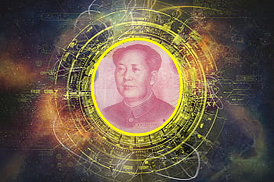 By 2050, China is the largest economy in the world. The Yuan, or a new digital currency backed by China, competes with the dollar as the global reserve currency. Despite concerns over global supply chains and a trend toward protectionism and nationalism – including China’s cultivation of exclusive, regional economic blocs – there remains extensive economic interdependence between the U.S. and China, especially concerning critical, niche resources like rare earth materials. In pursuit of ambitious economic goals, China invests heavily in disruptive technologies (e.g., artificial intelligence, autonomy, quantum information sciences, and next-generation communications technology) for commercial and military application to secure advantages over the U.S. across key sectors such as space, biotechnology, and quantum computing. Such applications may include sophisticated AI algorithms to defend against hypersonic and supersonic missiles; swarms of smart sea mines to block commercial shipping; constellations of automated sensors to detect and identify various actors in the Operational Environment; the use of quantum computing to create large-scale simulations of large-scale military deployments; and detailed modeling of complex synthetic biological applications.
By 2050, China is the largest economy in the world. The Yuan, or a new digital currency backed by China, competes with the dollar as the global reserve currency. Despite concerns over global supply chains and a trend toward protectionism and nationalism – including China’s cultivation of exclusive, regional economic blocs – there remains extensive economic interdependence between the U.S. and China, especially concerning critical, niche resources like rare earth materials. In pursuit of ambitious economic goals, China invests heavily in disruptive technologies (e.g., artificial intelligence, autonomy, quantum information sciences, and next-generation communications technology) for commercial and military application to secure advantages over the U.S. across key sectors such as space, biotechnology, and quantum computing. Such applications may include sophisticated AI algorithms to defend against hypersonic and supersonic missiles; swarms of smart sea mines to block commercial shipping; constellations of automated sensors to detect and identify various actors in the Operational Environment; the use of quantum computing to create large-scale simulations of large-scale military deployments; and detailed modeling of complex synthetic biological applications.
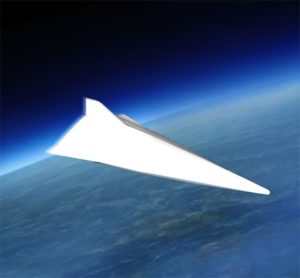
China continues its military growth and modernization efforts by developing and fielding advanced technologies. The People’s Liberation Army (PLA) continues to exploit the space and cyber domains and is increasingly proficient in semi-independent maneuver, extended expeditionary capabilities, hypersonic and supersonic missiles, advanced long-range precision fires, and directed energy weapons. China possesses advanced capabilities to launch covert attacks on critical U.S. space assets, degrading surveillance and navigation capabilities.
Furthermore, the PLA is structured to win in the competition space. In the cyber domain, China attacks vital U.S. financial assets via AI-enabled malware and ransomware, degrading and disrupting the U.S. economy. China invests in its ability to target U.S. civilian and military logistics systems, infrastructure, and installations and to impede U.S. naval and expeditionary maneuver—for example, by cyber-directing autonomous merchant traffic into congested SLOC and port facilities. China also funds, arms, and trains state and non-state actors to confront the U.S. in areas of strategic interest. Selective diffusion of revolutionary technologies to proxies kicks off regional arms races—especially involving technologies characterized by speed and lethality—and potentially draws the U.S. Army into outbreaks of regional conflict.
Access to and control of information continues to be a strategic commodity, particularly in a world of advanced artificial intelligence (AI). China seeks to obtain large amounts of information, secure their own information and communications (quantum key encryption), capture adversarial information (quantum sensing), and disrupt adversaries’ abilities to communicate  effectively (electronic warfare/anti-satellite). This alternative future is characterized by persistent information warfare, with AI-generated deep fake images, videos, and messaging sowing confusion, misleading planners, exploiting and deepening social divides, and eroding trust. Information warfare can be especially damaging to democracies, as citizens’ ability to trust the free press and fellow members of their society are bedrocks of this representative type of government.
effectively (electronic warfare/anti-satellite). This alternative future is characterized by persistent information warfare, with AI-generated deep fake images, videos, and messaging sowing confusion, misleading planners, exploiting and deepening social divides, and eroding trust. Information warfare can be especially damaging to democracies, as citizens’ ability to trust the free press and fellow members of their society are bedrocks of this representative type of government.
Total war between the superpowers is not impossible. If the U.S. secures a limited capability that China does not have – temporarily breaking a state of military parity – Beijing may feel compelled to act before the U.S. has a chance 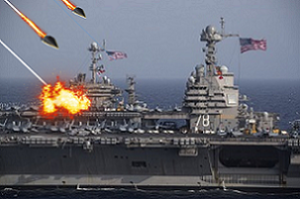 to field the system. Alternatively, if China develops a niche capability, it may act preemptively to avoid a disarming strike. Total war could also result from misperceptions or unexpected escalation of hostilities. For example, the PRC could underestimate American responses to Chinese attempts to control disputed territories. Such Chinese attempts might involve violence (or the threat of violence) or non-kinetic tactics like deployment of AI troll armies, cyber infiltration of supervisory control and data acquisition (SCADA) systems and critical financial systems, and virtual hostage-taking of critical resources.
to field the system. Alternatively, if China develops a niche capability, it may act preemptively to avoid a disarming strike. Total war could also result from misperceptions or unexpected escalation of hostilities. For example, the PRC could underestimate American responses to Chinese attempts to control disputed territories. Such Chinese attempts might involve violence (or the threat of violence) or non-kinetic tactics like deployment of AI troll armies, cyber infiltration of supervisory control and data acquisition (SCADA) systems and critical financial systems, and virtual hostage-taking of critical resources.
As long as military parity deters large-scale conflict in this alternative future, digital-maneuver capabilities—e.g., cyber-attacks and defense of critical infrastructure and sustainment systems, digital power projection, and digital information operations—gain prominence. Nevertheless, the U.S. Army must prepare for kinetic warfare characterized by heightened speed, lethality, and uncertainty.
Alternative Future #2: Ascending Powers
 This alternative future—a multipolar system with revolutionary technological innovation—is marked by persistent instability and conflict. The transition to a multipolar world has been marked by intense competition among several states, as well as domestic political strife within the U.S. and China that consumes significant resources and acts as an important “leveling” factor. Economic rebalancing has occurred: the U.S. and China experience economic stagnation as a result of long-running political and economic struggles, while emerging powers have leveraged decades of liberal economic order to consolidate wealth critical to military growth.
This alternative future—a multipolar system with revolutionary technological innovation—is marked by persistent instability and conflict. The transition to a multipolar world has been marked by intense competition among several states, as well as domestic political strife within the U.S. and China that consumes significant resources and acts as an important “leveling” factor. Economic rebalancing has occurred: the U.S. and China experience economic stagnation as a result of long-running political and economic struggles, while emerging powers have leveraged decades of liberal economic order to consolidate wealth critical to military growth.
The competition space in this alternative future is beset by constant, widespread “balancing” actions among competitors. A number of states—e.g., the U.S., China, Russia, India, Turkey, and some European powers—expend valuable resources, to include military power, in a protracted struggle to gain advantage. The absence of global hegemons to check aggression among regional competitors results in coalition-building and arms races, especially involving provocative revolutionary technologies characterized by speed and lethality. During this critical transition period, rising powers are aggressive in their pursuit of critical resources and prestige, while declining states launch preventive wars to maintain access to critical resources or to control domestic populations. Domestic instability among waning superpowers gives way to the rise of organized non-state groups. Some of these groups are able to access revolutionary weapons systems and pose significant challenges to national militaries.
Military advantage in this alternative future is won by those possessing revolutionary technologies to employ across all domains in conflict—for  example, hypersonic or supersonic systems, advanced robotics and autonomy, revolutionary energetics, quantum key encryption and sensing, counter-space capabilities, and AI-enabled data-processing and decision-making systems. Access to such technologies enable weaker states to make sudden and dramatic improvements to their capabilities—i.e., to join the race—and ultimately challenge military superiority of regional hegemons. The speed and uncertain capabilities of some of these technologies—e.g., lethal autonomous weapons systems—forces actors to closely monitor and quickly match the capabilities of their rivals.
example, hypersonic or supersonic systems, advanced robotics and autonomy, revolutionary energetics, quantum key encryption and sensing, counter-space capabilities, and AI-enabled data-processing and decision-making systems. Access to such technologies enable weaker states to make sudden and dramatic improvements to their capabilities—i.e., to join the race—and ultimately challenge military superiority of regional hegemons. The speed and uncertain capabilities of some of these technologies—e.g., lethal autonomous weapons systems—forces actors to closely monitor and quickly match the capabilities of their rivals.
In this alternative future, threats are geographically unpredictable, occur across multiple domains, and are dispersed widely among numerous adversaries with varying degrees of temporary overmatch and intentions. The U.S. Army is forced to engage in many types of conflict, perhaps simultaneously, in which Soldiers face a range of highly capable adversaries—from conventional forces to insurgents, transnational criminal organizations, mercenary armies, and proxy forces. Due to heightened international competition and the primacy of security coalitions, the U.S. Army acts as a secondary player in many conflicts, with allies taking the lead on grounds of national interests or niche technological leadership. Alliances will be critical to shore up U.S. defense and strike capability, deter economic aggression, and mitigate distributed information warfare campaigns.
Alternative Future #3: Stable Competition
This alternative future—a bipolar system with an “evolutionary” rate of technological innovation—in many ways resembles the world of today. In it, enduring economic and political effects of successive global pandemics cause the U.S. to lose its position as sole superpower, while China ascends to superpower status on the back of its thriving economy.
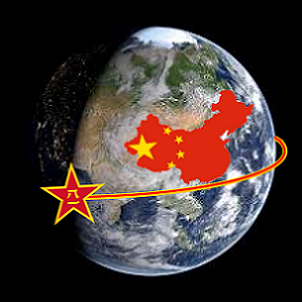 China continues to disperse its economic production activities globally to its spheres of influence, challenging U.S. multinational corporations in many instances. In its cultivation of exclusive economic blocs, China guarantees itself access to critical natural resources that it does not possess at home. It otherwise guarantees manufacture of military, medical, and supplies vital to national security through domestic means or from trusted bilateral partners. China continues to invest heavily in leading-edge technologies—e.g., artificial intelligence, autonomy, quantum information sciences, next-generation communications, biotechnology, hypersonic and supersonic missiles, advanced long-range precision fires, directed energy weapons, and cyber and electronic-warfare tools. It also continues to invest in human capital, domestic manufacture of infrastructure, and the production of more value-added products – all in order to maintain wealth generation critical to its military power.
China continues to disperse its economic production activities globally to its spheres of influence, challenging U.S. multinational corporations in many instances. In its cultivation of exclusive economic blocs, China guarantees itself access to critical natural resources that it does not possess at home. It otherwise guarantees manufacture of military, medical, and supplies vital to national security through domestic means or from trusted bilateral partners. China continues to invest heavily in leading-edge technologies—e.g., artificial intelligence, autonomy, quantum information sciences, next-generation communications, biotechnology, hypersonic and supersonic missiles, advanced long-range precision fires, directed energy weapons, and cyber and electronic-warfare tools. It also continues to invest in human capital, domestic manufacture of infrastructure, and the production of more value-added products – all in order to maintain wealth generation critical to its military power.
The evolutionary pace of technological change results in only marginal changes in the deployment speed and lethality of military systems, moderating fears among competitors and lowering the risk of preemptive strikes in reaction to perceived military gains. Generally, “rebalancing” after temporary shifts in military power is faster than in a world of revolutionary technological innovations. Military parity and continuing economic interdependencies between China and the U.S. are deterrents to large-scale conventional warfare. In the unlikely event of large-scale conflict, however, Chinese and American forces would rely on legacy systems – perhaps employed in novel ways – or marginally disruptive technologies involving artificial intelligence and autonomy, tailoring its forces to win limited high-intensity conflicts using overwhelming speed and firepower.
China avoids direct, conspicuous acts of aggression that would undermine its legitimacy among other global powers. Instead, it attempts to gain economic and financial advantages in licit and illicit ways against the U.S.—to include AI-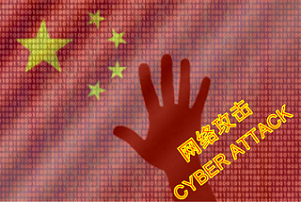 enabled malware and ransomware attacks against commercial, defense-logistics, public-infrastructure and installation targets—in order to undermine U.S. military capability and achieve marginal economic advantages. However, the evolutionary pace of technological change allows sufficient time for potential targets to develop reliable counter-measures, undermining China’s ability to attack in non-attributable ways.
enabled malware and ransomware attacks against commercial, defense-logistics, public-infrastructure and installation targets—in order to undermine U.S. military capability and achieve marginal economic advantages. However, the evolutionary pace of technological change allows sufficient time for potential targets to develop reliable counter-measures, undermining China’s ability to attack in non-attributable ways.
In an emerging bipolar world, lower-tier states pursue bilateral relationships and economic and security blocs increasingly aligned to Chinese economic, diplomatic, and military interests; as well as parochial pacts with whomever best affords security and economic opportunities. In their pursuit of new 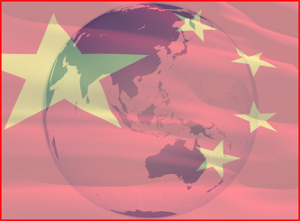 strategic partners and greater leverage with others, China plays an active role in leading and reshaping the international order, partly through its participation in key international institutions—e.g., the United Nations, World Trade Organization, and World Health Organization. Many of China’s international relationships will be transactional and extractive in nature, in contrast to the U.S.’s efforts to strengthen other countries’ capacities to make independent choices and counter foreign interference.
strategic partners and greater leverage with others, China plays an active role in leading and reshaping the international order, partly through its participation in key international institutions—e.g., the United Nations, World Trade Organization, and World Health Organization. Many of China’s international relationships will be transactional and extractive in nature, in contrast to the U.S.’s efforts to strengthen other countries’ capacities to make independent choices and counter foreign interference.
In this alternative future, the U.S. military must prepare to confront a familiar array of challenges such as Chinese military modernization and expeditionary operations, increased Russian proxy warfare and fait accompli land grabs in Europe and Central Asia, Iranian and North Korean nuclear development, and the ever-present threat of insurgency and terrorism. The United States will continue to pursue its national interests within a system of degraded alliances and fewer partners resulting from China’s increased relative global power and influence.
Alternative Future #4: Clashing Coalitions
In this alternative future—a multipolar system with an “evolutionary” rate of technological innovation—rising and declining states compete with one another, regional rivals, and even non-state actors for resources and global influence. A protracted era of globalization—including free trade, investment,  and labor-flow regimes—has been a central feature of the leveling dynamic, producing several regional hegemons. Partial defections from the current globalized economic order occur in limited situations where ascending regional powers challenge the standing of their respective regional hegemons, encouraging the latter to extend military threats or cultivate relatively exclusive, bilateral agreements in their own long-term favor. However, because ascending powers are incapable of acquiring truly provocative “leap-ahead” capabilities, this kind of event is uncommon.
and labor-flow regimes—has been a central feature of the leveling dynamic, producing several regional hegemons. Partial defections from the current globalized economic order occur in limited situations where ascending regional powers challenge the standing of their respective regional hegemons, encouraging the latter to extend military threats or cultivate relatively exclusive, bilateral agreements in their own long-term favor. However, because ascending powers are incapable of acquiring truly provocative “leap-ahead” capabilities, this kind of event is uncommon.
The evolutionary pace of technological innovation does not produce large military disparities among competitors, or the corresponding atmospheres of uncertainty and fear. This results in greater adherence to control-of-use agreements, as states feel less compelled to block the rise of regional competitors with threats and use of force. Lower-tier states can band together to force the negotiation of institutions over which regional hegemons attempt to maintain disproportionate sway, including these control-of-use agreements. Still, acute diplomatic disputes and sporadic military conflict—events that risk escalation—may occur over access to critical, ever-dwindling natural resources. Furthermore, there is a heightened risk that states will misinterpret the increasingly complex network of mutual “red lines,” or the extent to which a competitor will go to defend their interests.
In a world of evolutionary technological innovation, strategies of discreet, marginal improvements to one’s relative economic and military standing – including through impeding competitors’ progress – are particularly effective. Many regional hegemons conduct covert economic and financial warfare 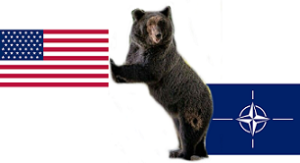 against adversaries’ commercial, defense-logistics, public-infrastructure and installation targets. Others conduct information operations to foment internal unrest abroad or to undermine traditional alliances.
against adversaries’ commercial, defense-logistics, public-infrastructure and installation targets. Others conduct information operations to foment internal unrest abroad or to undermine traditional alliances.
As in the multipolar alternative future with revolutionary technological innovations, threats in this world are geographically unpredictable, occur across multiple domains, and are dispersed widely among numerous adversaries with varying intentions. The U.S. Army is forced to engage in many types of conflict, perhaps simultaneously, in which Soldiers face a range of highly capable adversaries. However, any temporary overmatch among competitors in this alternative future is more predictable and more readily balanced.
Conclusion
The alternative futures presented here are neither definitive nor all-inclusive. Rather, these are just a glimpse of what the future may hold. Regardless of whether we find ourselves in a bipolar or multipolar system, the U.S. Army must be prepared to face a range of threats as something other than the sole superpower. Describing the Future Operational Environment is the first step in driving the concepts and capabilities necessary to fight and win the wars of tomorrow. For the Nation and the Army to succeed, we will continue to study the environmental, geopolitical, technological, and military trends that are already changing the nature of warfare.
If you enjoyed this post, read:
The complete AFC Pamphlet 525-2, Future Operational Environment: Forging the Future in an Uncertain World 2035-2050 and watch the associated video
Four Models of the Post-COVID World
Competition in 2035: Anticipating Chinese Exploitation of Operational Environments
“Tenth Man” – Challenging our Assumptions about the Operational Environment and Warfare (Part 1) and (Part 2)

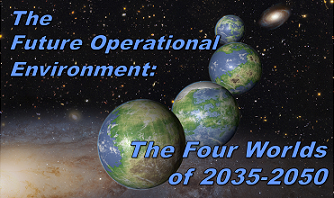


I am a strategic analyst at HQ Air Force Special Operations Command. We use your products quite regularly to assist us in building our Future Operating Environment strategic planning documents. In order to clarify, I have a couple of questions: Your graphic on the four alternatives is out of synch with the narrative for the four alternatives (graphic reads right-to-left starting with the New Cold War and the narrative reads top-to-bottom starting with clashing coalitions). Was this done purposely?
Also, the graphic displays Under Governed and Unipolar on the Concentration of Power scale, yet the four alternatives only discuss Multipolar and Bipolar systems. Is there conditions that support the Under Governed and Unipolar systems? Or, is the graph simply to show there are additional systems, but based on the analysis they are not affected?
One alternative future not discussed is the collapse of a great power. That would dramataically change every alternative scenario considered in this study.